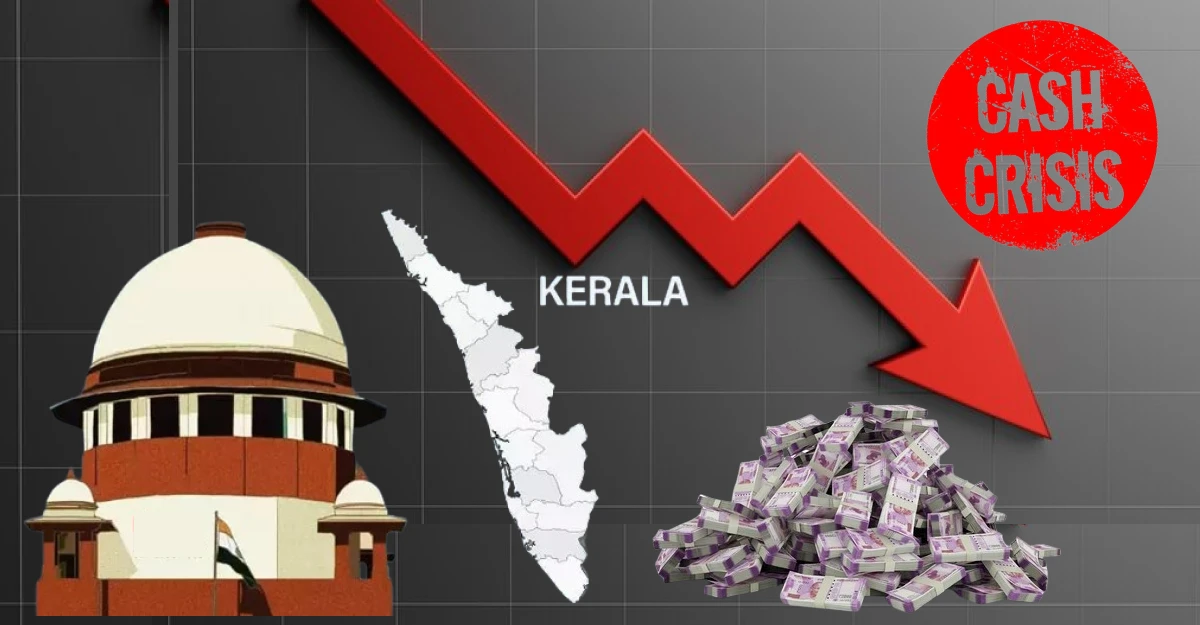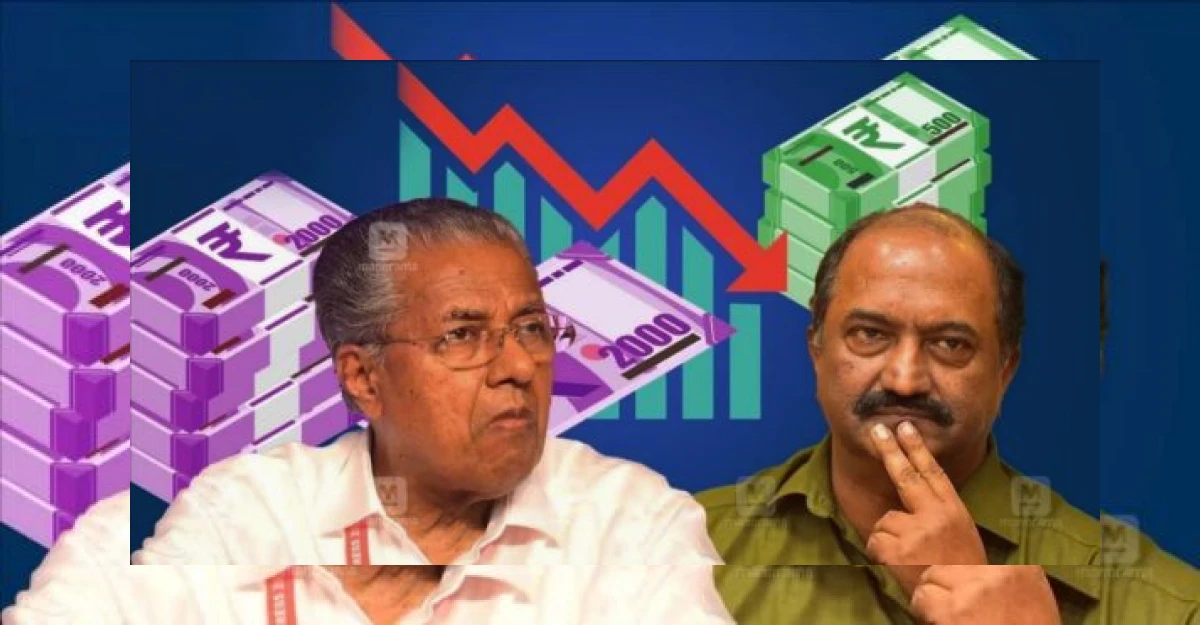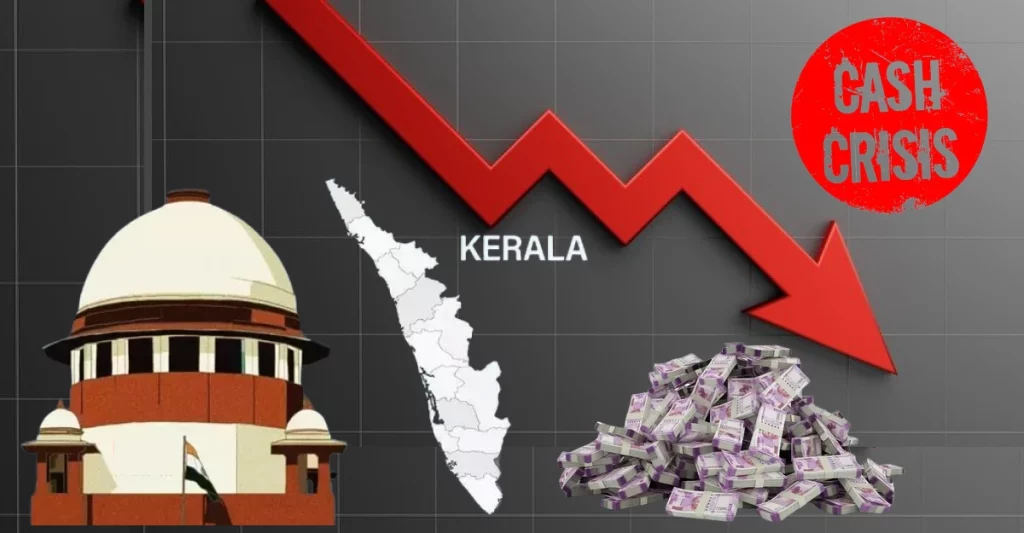There was a time when Kerala boasted about the better chance of survival of newborns to the age of 5 than in the United States. Now, it is seeking for loans from the central government to meet its daily ends…

Now the question is- Is Kerala under financial crisis? Let’s find out!
Story So Far
The Kerala government and the Central Government are in a heated discussion with each other! Reason? Shortage of money in Kerala… The state is asking for the loan while the central government is saying that Kerala has already exceeded its debt limit.
Here comes a million-dollar question- How come one of the most literate states in India dipped into a financial crisis?
Let’s understand Kerala’s financial situation in depth-
- Sources of Revenue: The Indian states including Kerala generate revenue from various sources such as excise duty on items like alcohol, vehicle taxes, property taxes, electricity taxes, state GST since 2017, and a share from the central government.
- Allocation of Revenue: The revenue received is primarily used to cover committed expenses like salaries, pensions, welfare schemes, and interest payments, which fall under revenue expenditure. These expenses are essential for maintenance but do not contribute to asset creation.
- High Committed Expenses: Kerala faces a challenge as its committed expenses consume a significant portion of its revenue receipts, approximately 71%, higher than the average of other states, which is below 60%. This limits the state’s ability to invest in long-term infrastructure projects like roads that could generate more employment opportunities and revenue.
- Heavy Investment in Social Sectors: Kerala has historically invested heavily in social sectors like education and healthcare, resulting in a personnel-heavy expenditure. While this investment has led to better social indicators, such as higher child survival rates compared to the US, it has also created financial pressure on the state.
- Struggle to increase Revenue: Despite having a per capita GDP 1.6 times higher than the Indian average, Kerala’s tax-to-GDP ratio is similar to the national average. The state has not been successful in increasing its revenue share from taxes, leading to a situation where it competes with Scandinavian countries in social protection but with African-level taxation.
Kerala’s money troubles have been like a stubborn stain that just won’t go away. They’ve been spending a lot on things they have to, like salaries and pensions, plus pouring cash into education and healthcare. But here’s the kicker- they’re not making enough money to cover all these expenses.
So, despite having better schools and hospitals than many places, they’re still struggling to keep their finances in check. This has sparked talks about making big changes to how they manage their money, hoping to find a solution to this never-ending financial headache.
Kerala Under Financial Crisis: How bad is the situation?

Labeled as a “highly debt-stressed” state by the 15th Finance Commission, Kerala has been grappling with a major money challenge. For almost ten years, it’s been tough for Kerala to keep its spending in check, especially when it comes to balancing the books.
in 2018-19, the ratio between what they spent and what they earned was a whopping 65%, showing that they had to borrow a lot just to cover basic stuff like paying salaries and pensions.
Now let’s dive into the critical financial crisis in Kerala-
- Burgeoning Salary Burden: The commission highlighted Kerala’s alarming salary expenditure, ranking second highest in terms of salaries as a percentage of total revenue expenditure. Moreover, the upward trend in salary growth exacerbates the financial strain, signaling a continued rise in this financial burden.
- Dismal Capital Expenditure: The state’s capital expenditure paints a bleak picture, described as “very low” compared to similar states, both in terms of total expenditure and GSDP. This suggests a lack of investment in crucial infrastructure and development projects.
- Covid Fallout: The COVID-19 pandemic has only exacerbated Kerala’s fiscal woes, with the fiscal deficit remaining stubbornly outside mandated limits. This ongoing financial crisis was acknowledged by Kerala Chief Secretary V Venu, describing the state’s situation as a “deep financial crisis” and struggling to secure funds for daily operations.
- Treasury Troubles: Recent reports indicate a further tightening of funds, with many transactions in the treasury put on hold due to fund shortages. Orders were issued to halt processing bills exceeding Rs 1 lakh, excluding pension and salary payments, highlighting the severity of Kerala’s financial predicament.
Kerala Government vs Central Government: What went wrong in 2024?

Kerala is pointing fingers at the Central government, claiming that their recent rules have made their financial problems even worse.
The main issue is a rule called the Net Borrowing Ceiling (NBC), which sets a limit on how much money a state government can borrow based on its GDP. For Kerala in the fiscal year 2024, this limit was around ₹32,400 crores.
Here’s where it gets tricky-
Kerala has a state-run organization called the Kerala Infrastructure Investment Fund Board (KIIFB), which funds infrastructure projects in the state. In the past, KIIFB’s debts didn’t count towards Kerala’s borrowing limit, so they could borrow more money for infrastructure outside of the NBC. This was known as off-budget borrowing.
However, the Finance Commission closed this loophole in 2021, causing Kerala’s problems to escalate. Suddenly, all of KIIFB’s debts were included in the state’s borrowing, leaving Kerala with fewer options for borrowing money.
When Kerala asked the Central government for assistance, they were turned down.
Yes, you heard right!
The Central government declined Kerala’s plea for an extra Rs 8,000 crore in funds, citing a breach of the Fiscal Responsibility Act. Despite Kerala Finance Minister K N Balagopal’s visit to the capital in November to discuss the matter with Sitharaman, no favorable outcome was achieved.
Kerala argues that this goes against Article 293 of the Constitution, which states that a state’s public debt should be its own concern, not controlled by Parliament. So, Kerala decided to take the matter to the Supreme Court.
As for the Supreme Court’s decision, we’re still waiting. It’s the first time such a case has come up, so the Chief Justice of India will assemble a five-judge Constitution Bench to examine the issue. But until then, Kerala’s financial problems persist…
Note: We have explained various other crises thoroughly such as-
You can go through them to understand the issue in detail.
Wrap-Up
The battle between the Central government and Kerala isn’t just about how much money the state can borrow. It’s also about things like how much tax money Kerala collects and how the Central government offers funds. Some people in Kerala’s government say the Centre is picking on states run by parties other than the BJP when it comes to money matters. It’s like a financial showdown…
Let’s keep an eye on how the Kerala’s Fiscal Crisis unfolds. Stick around to see what happens next!


Kerala is the perfect example that education doesn’t make you rich. Entrepreneurship does! Just look at Gujarat. Despite not being so educated, the gujrati businessmen are flourishing with immense wealth.